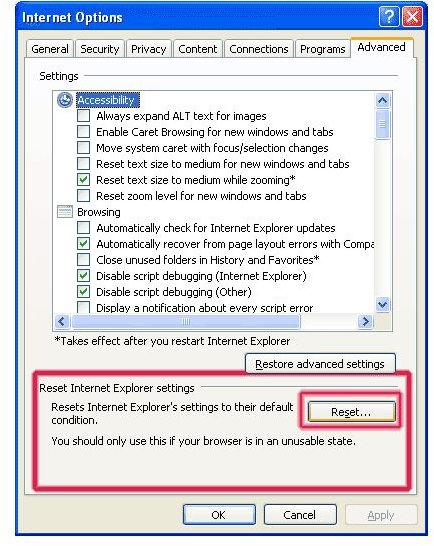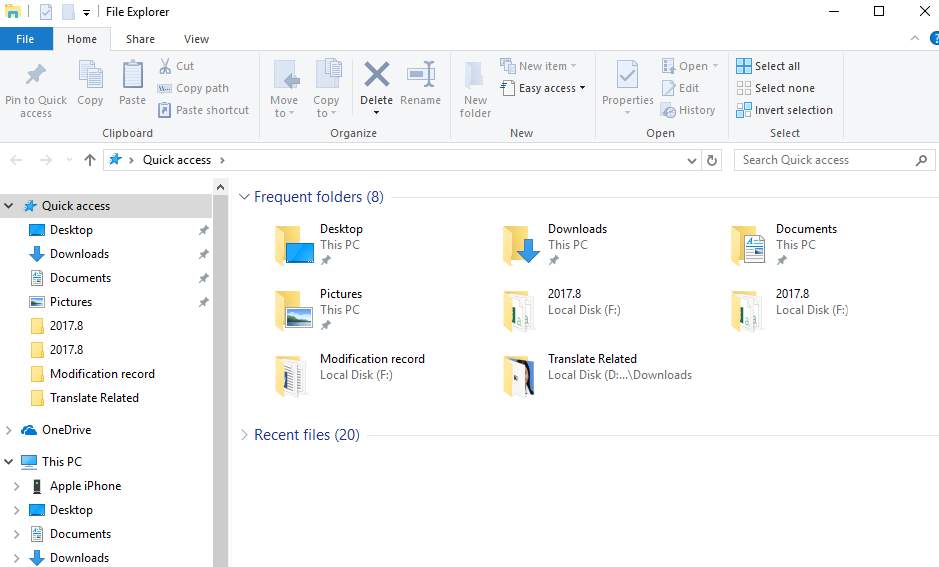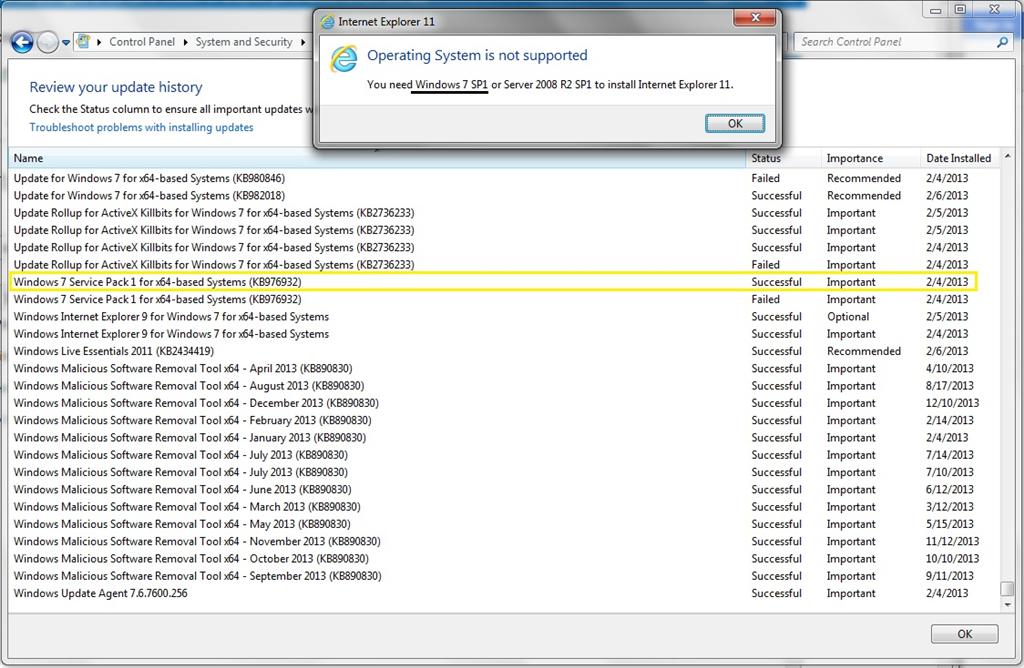How To Reinstall Windows Explorer On Windows 7
First read the discussion you will find here to decide what you will do about Windows Update:

Then consider replacing the hard drive with a new one. The work ahead of you is the same on a new one as the current one. The cost is about $70. Keep in mind that the life expectancy of a laptop hard drive is about 5 years. $70 or so seems like a small price to assure that this work will pay off for years to come.
Bring Back the Internet Explorer Namespace Icon in Windows 7 the Easy Way If you just want the IE icon back, all you need to do is download the RealInternetExplorerIcon.zip file, extract the contents, and then double-click on the w7ieiconrestore.reg file.
Then follow this procedure. I strongly urge you to follow it precisely. I know it is accurate and works because it is exactly the procedure I use for my clients' PCs.
- The hard drive has failed. You will have to replace it. Replace with a 500 G or more rotating 7200rpm drive. 500G drives can be found for around $70. Typically quite easy to replace. Now you will need a complete Windows 7 install.
- I do this all the time. I have done hundreds. This is likely to take an elapsed time of around 12 hours.
- First go to your computer’s OEM support site and find and download the drivers for your computer and store them on a USB stick.
- From this point onward, I am providing you with the process to install Windows 7.
- You may be able to take your data off first. Remove the failing hard drive and put it into a USB external drive housing. Connect to a working PC, copy the data off. You may need a friend to do this part for you, but the rest is not really very technical or difficult for most people.
- Install the new hard drive.
- Do not do any formatting or partitioning.
- If you made a set of disks for recovery or an image copy at the time your computer was new. This is the time you need them.
- Start your computer on the first of the disks as instructed and in an hour or so, your computer will look exactly as it did then.
- If you do not have that set of disks. You will need a legal reusable Microsoft Product Key. You will need a Windows 7 install disk. The win7 disk must match the edition of your product key, and its bitness (32 or 64). If you do not have the original Windows 7 install disk, borrow one from a friend. Hopefully, the disk you use will be labeled SP1 (Service Pack 1), because that will save you an additional 4 hours or so.
- Place the Windows 7 install disk in the disk reader and start your computer.
- Once the install process is started, choose CUSTOM. Ignore the check box about drivers, unless you can not proceed further.
- If this is not a brand new hard drive, when you get to the place where it asks you where to put the installation, click Advanced and delete all partitions.
- When the installer asks about Windows update, choose Ask me later
- Reset Windows Update setting to Never….
- Do NOT install any program
- Hopefully, you started with a Win7 install disk that was SP1 (Service Pack 1). If not, run Windows Update until you get to the point that SP1 has installed itself as part of this procedure. It entails multiple Windows Update passes and restarts which you keep updating until you get there.
- Once Windows 7 SP1 is installed, install the following:
- KB3020369 Win-7 32 https://download.microsoft.com/download/C/0/8/C0823F43-BFE9-4147-9B0A-35769CBBE6B0/Windows6.1-KB3020369-x86.msu
- Win-7 64 bit https://download.microsoft.com/download/5/D/0/5D0821EB-A92D-4CA2-9020-EC41D56B074F/Windows6.1-KB3020369-x64.msu
- KB3138612 Win-7 32 bit, https://www.microsoft.com/en-us/download/details.aspx?id=51208
- Win-7 64 bit,https://www.microsoft.com/en-us/download/details.aspx?id=51212
- Open Windows Update, change Windows Update setting to Never check for updates
- Do not install anything else at this point – NOTHING. Not even an antivirus program
- Start the update process. It is likely to include about 200. It will take some time.
- Install all offered security updates. Install .net, but do not install any updates that do not come pre-checked. Do not install any “Optional” updates.
- Once you have a list of updates, you need to prevent certain specific updates from being installed to prevent Windows 10 from taking over.
- Click once on each Windows Update that is NOT labeled SECURITY and check the date of issue on the right. If that date is after January 1, 2015, Right-click on it and hide.
- ALL updates issued after September 2016 should be hidden as well
- Click install updates and wait for it to finish. Restart when asked to do so.
- After re-start is complete and you see a desktop, start Task manager – Right-click on task bar. Look at the % at the bottom. Do NOT attempt to use the computer for any purpose until you see that % fall to and stay at 10% or less. Windows Update is still working and has a lot of work to do.
- Keep running Windows Update again and again till it offers no new ones.
- Start Internet Explorer, click the gear (upper right) in IE11 and select Compatibility settings and enter Microsoft.com in the list
- Reset Windows Update to Never….
- Start Windows Update and click the link to include updates for other Microsoft software.
- Run Windows Update again and again until you are satisfied you have all the updates you want.
- After the install is complete, check Device Manager. Type device in the text box above the start globe when you click it and choose Device manager from the list to find out if Win7 was able to supply the drivers you need. You should get drivers only from the maker of your computer or Intel. Its best to get all the drivers at this point. Win7 install may have installed all of them or nearly. Do NOT use any of those driver download sites. They are all bogus, have bad drivers, and install malware.
- Install your Microsoft Office software and then run Windows Update again and again till no more are proposed.
- Defragment your drive. Type defragment in the text box above the start globe when you click it once. Choose the Defragmentation link. Wait till it completes all passes..
New install tip:
After Windows 7, system drivers and all updates are installed and any stable applications like Microsoft Office are installed and updated, and before any data or dynamic applications are installed such as antivirus software, create a system image. It will take 3 or 6 DVD +Rs (not -Rs) and about an hour. When you are done you will have a very nice bit of insurance. Should you ever again need to re-build a corrupted system or replace a hard drive, you will have a precise duplicate of your system as it was at this point. You can restore that image to a hard drive in about 20 minutes. Creation of System Image is found in your menu under Maintenance, Backup and Restore.
Another great feature about using the image is that you do not need an install disk or a product key to do the re-install the next time, and you will have saved yourself all the time you put in this time.
I emphasize the need for PLUS R DVD blanks. Do not use the more common MINUS R DVD blanks.
NOW, you can begin to install your programs, and not before this point.

Microsoft’s latest iteration of Windows, Windows 7, is undoubtfully the best operating system because of its improved UI, features and overall performance.
One of the lesser known features of Windows 7 is its Advanced recovery methods. With the advanced recovery feature one can easily reinstall Windows 7 without much hassle.
You can reinstall Windows 7 either from a recovery image provided by your computer manufacturer, or from your original Windows 7 installation disc or Windows 7 USB flash drive.
Reinstalling Windows 7 OS
Step 1: Open Start menu, type in Recovery in the search box and then hit enter to launch Recovery window.
Step 2: Click Advanced Recovery methods to open Windows 7’s advanced recovery methods.
Step 3: In the Advanced Recovery window, you will see two options:
# Use a system image you created earlier to recover your computer: If you have created a system image, you can use it to replace everything on your computer, including Windows, programs, and all your files, with the information saved on the system image.
# Reinstall Windows (requires Windows installation disc): This option will reinstall Windows on your computer. Afterward, you can restore your files from a backup. Any programs you have installed will need to be reinstalled using the original installation discs or files. Existing might remain in the Windows.old folder on your hard disk after the reinstall completes.
Step 4: Click Reinstall Windows option to start the reinstallation procedure. You will be asked to backup your files in the next step. Click Backup now option to backup your files such as document, pictures and music to a USB, DVD or external hard disk.
Click Skip and then click Restart button to restart your PC to start the reinstall process.
Note: When you use this method (Reinstall Windows), the existing Windows installation will be moved to the Windows.old directory. You can retrieve data from that location after the restore completes. Any programs you have installed will need to be reinstalled.
Step 5: Once you hit the restart button, wait for a few minutes to see the following screen. Select your keyboard input method and click Next.
Step 6: In following screen, you will be prompted with reinstall Windows 7 confirmation box. Click Yes to proceed to the next step.
Step 7: Now insert your Windows 7 installation disc and then click Yes to see the Windows 7 installing screen. From here onwards, you need to follow the simple onscreen procedure to complete the reinstallation procedure (you can refer our Windows 7 installation procedure).
Step 8: Windows will take a few minutes to show the below screen, where you need to enter a username to your account.

Step 9: Click Next to see the set password box. If you like to set a password for your account, type and then retype the password in respective boxes. Click Next to continue.
Step 10: In this screen, click Use recommend settings and then select your time zone and again click next button to select your network type from available Home, Word or Public network.
Step 11: You are almost done! You have successfully reinstalled Windows 7. You might see the Restore my files box on the desktop. Click Restore my files button if you have done a backup in the step 5.
Step 12: Finally, you might want to delete the Windows.old folder during the reinstallation process by Windows to move your old installation files. Refer our how to safely delete Windows.old folder in Windows 7 guide to free up a few GBs of your hard disk space.
How Do I Reinstall Windows Explorer In Windows 7
Step 13: Once the reinstall is done, it’s time to install all your software and device drivers.
How To Reinstall Internet Explorer On Windows 7
Our to how to legally reinstall Windows 7 without entering the product key guide might also help you.